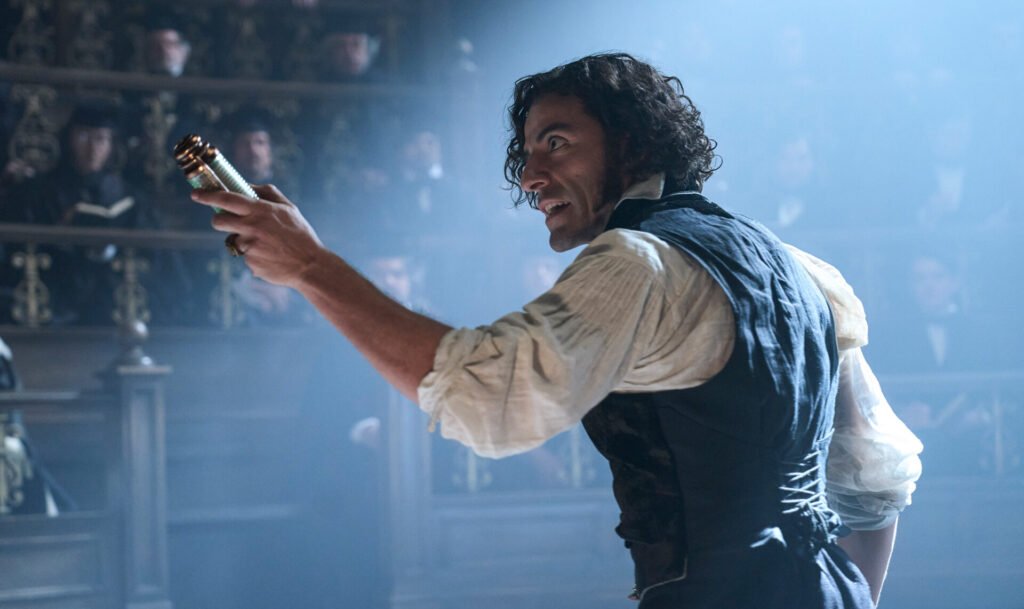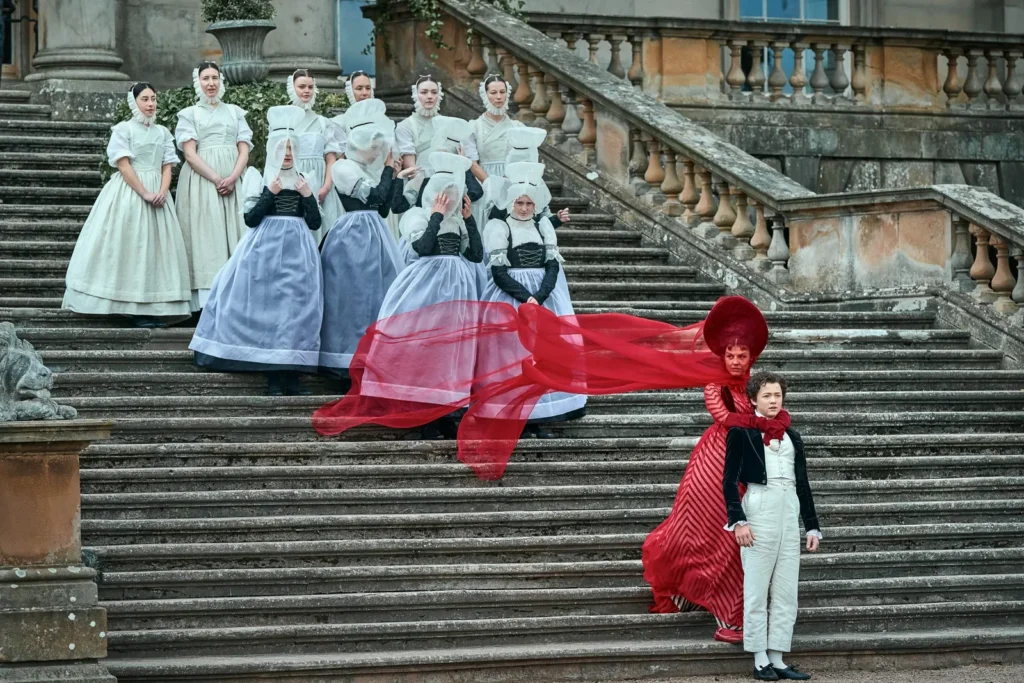Mary Shelly’s Frankenstein is a story that has been retold many times throughout the years. This time around, Guillermo del Toro leaps into the Arctic and grabs the helm to tell his own version of this classic gothic tale.
If there is one thing that del Toro nails every time, it’s immediately setting the tone of his films. The movie begins very similarly to the source material, Victor Frankenstein being hunted by The Creature. Right out of the gate, you are left intrigued as, just in the distance, you see the outline of the creature. Shortly after, we get a taste of the sheer power the monster has, and his unfortunate inability to die.
Without getting into major spoilers, Del Toro breaks his film into two main parts, Victor’s Tale and The Creature’s Tale; both told to us by the respective party. In Victor’s Tale, he tells us about his harsh upbringing with his cruel father and how he loses the one bit of life he has, his mother. This loss of life leads him to his obsession with creating it, as he wants to be better than his father, who has begun to favor Victor’s younger brother William. We then flash forward many years to learn how Victor came about bringing life to The Creature.

As for The Creature’s Tale, we learn how he survives Victor’s initial attempt to kill him and how he learns to speak and discover his origins. I found this part of the film far more enjoyable than Victor’s Tale as you learn to see The Creature as a being with thoughts and feelings. Victor’s Tale still has emotional beats to it, but listening to The Creature tell his side of the story allows you to truly care for him.
Now, if you are going into this filming under the impression that it is the film version of the novel, you would be mistaken. This film takes many liberties with the source material, but I’ve come to appreciate that. I would much rather watch a reimagining of a story, than watch a word for word remake of something that I’ve already seen, especially when there are countless versions of Frankenstein. Not to mention, after his retelling of Pinocchio, I have come to learn that del Toro’s approach is perfect, keeping the same messages but changing some of the ways that we get there.
As for the cast, they are phenomenal. Oscar Isaac’s portrayal of Victor Frankenstein instantly became one of my favorite roles that he has ever played. His ability to step into the shoes of a tortured and selfish man is spectacular. Jacob Elordi as The Creature is one that I wasn’t sure I would like, but from the moment he is on screen you are intrigued. What was most impressive about his performance was his subtle mannerisms while moving in this new body. The way he walks, looks at himself in the water, and just portrays pure innocence, was truly a great performance. Moreover, Mia Goth’s portrayal as Elizabeth, though different from the novel, was beautiful. Goth speaks with her eyes in this film, from her first glance at Victor to the way she looks at The Creature, she shows that you don’t have to say much to dazzle. Elizabeth is the voice of reason in the film, Goth did an incredible job at playing this role.

Another thing I applaud del Toro for is his use of imagery and symbolism in the film. The biggest symbol being the color red. It is the color of the dress Victor’s mother wears, the color of the umbrella Elizabeth uses while Victor is following her around town, and the color of Victor’s gloves. My interpretation of the color being a symbol for life. Victor’s only joy in life was his mother and he loses that life when she dies, and only begins to feel life again when he meets Elizabeth. It is also the color of blood, which is the first thing that Victor notices when the creature cuts himself with a razor; Victor in his red gloves symbolizing the blood on his hands for creating this monster.
We can’t talk about a Guillermo del Toro film without discussing the horror. Del Toro showed that he knew how to make gothic horror with Crimson Peak, he showed that he mastered it with Frankenstein. From the stunning design of Victor’s lab to the gruesomely pieced together creature, del Toro proved that he is an artist. There is a fair amount of gore in the film as well, nothing to make you super squeamish, but tastefully added in to show the strength of The Creature. Obviously, the most notable bit of horror being the way Frankenstein assembles his monster. Taking bits and pieces of dead soldiers from a battlefield, sawing limbs off and forcing bones into flesh, it’s pretty gross, but it’s exactly what you would expect from del Toro.

Finally, and most admirably, del Toro leaves his viewers with the same messages that Mary Shelly had for her readers. The film conveys the risks of being self absorbed with your aspirations, the dangers of trying to play God, and most importantly, that we are all products of our upbringings. The film’s ending is one that is excruciatingly emotional, and honestly, might even be more satisfying than Shelly’s. To end on the words of Lord Byron “And thus the heart will break, yet brokenly live on.”
Frankenstein : From his stunning visuals to his immediate tone setting, Guillermo del Toro once again proves why he is one of the best horror directors of all time. – Anthony Fichtner
